St. David’s Church, Radnor
Wayne, Pennsylvania
Opus 84
• • •
Photos of the Interior Parts of the Organ
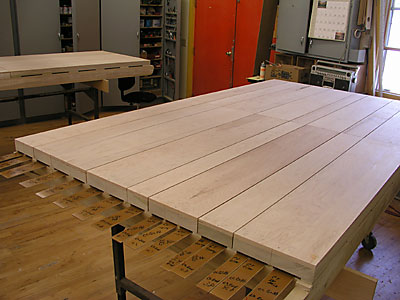
Apart from the pipes, the first major components of the organ to be made are generally the windchests. This is one of the two windchests shared by the Great & Pedal. The next step in its construction is to drill the hundreds of holes required to convey the air from the valves to the pipes.
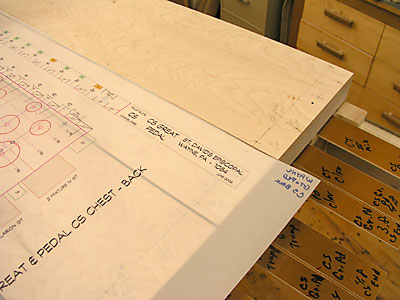
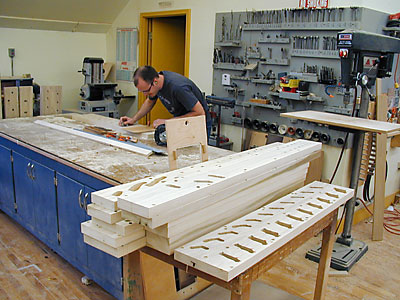
Donny routing channels in windchest toeboards.
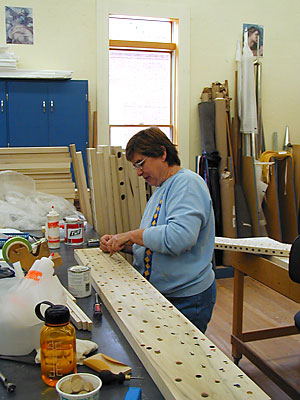
Meridith at work on windchest toeboards.

Burning toeholes. Each hole size is marked with a different color for ease of identification in drilling. Then each hole on the top side of every toeboard is given a countersink to receive the pipe. The countersink is made not by cutting away the wood, but by burning it through the friction of special bits.
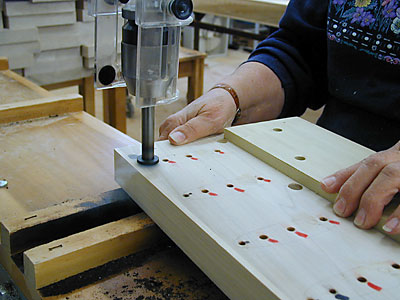
A close-up of the process.

Some of the toeboards after final sanding and lacquering.
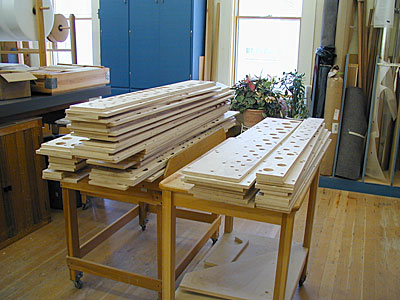
Some of the rackboards, which have been drilled to receive the pipes but not yet fitted to the toeboards.
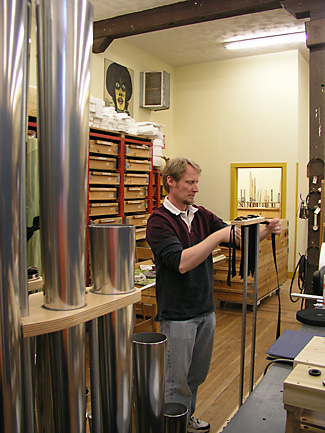
John Streufert racking larger flue pipes for the Swell.
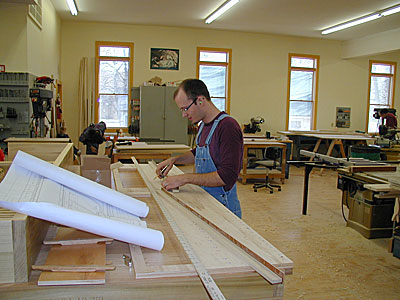
Donny making the guides for the windchest pallet springs.
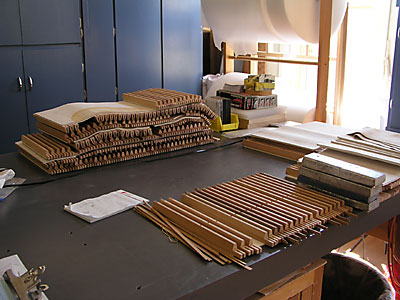
The windchest valves are long wooden components called “pallets”. To make them airtight, they are covered with a layer of felt and leather. A group of pallets is glued on a single large piece of felt and leather, then the individual pallets are cut apart using a special bandsaw knife blade. Here you can see all of the pallets for Op. 84, waiting to be cut apart.
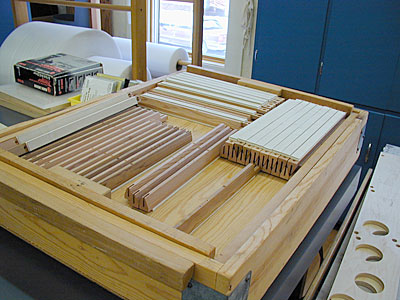
The completed pallets.
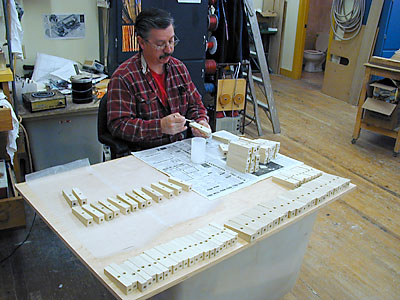
Bob leathers balanciers, a component of the windchests that lightens the action.

Bob leathers one of Op. 84’s five reservoirs.
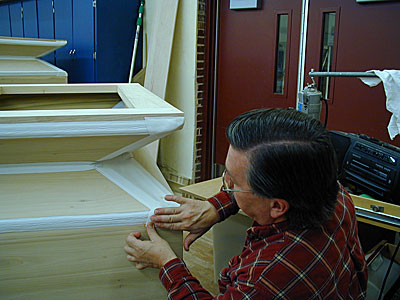
An additional piece of leather is applied to seal and protect the ends of the gusset, which is the large piece of leather that covers and makes airtight the corners of the reservoir.

Shop foreman Dean Heim making key action parts on a milling machine.

The console chassis under construction. The manual keyboards will be mounted on top of the chassis. The mechanism for the couplers fits between the keyboards and the rollerboard.
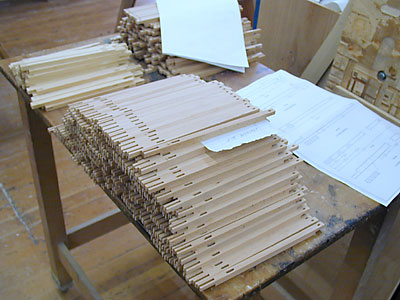
Piles of levers, part of the console coupler mechanism.

Art and Jon install wires for the couplers.

The back of the console, showing the beams that hold the action squares at the bottom, and the solenoids that operate the couplers at the upper left.
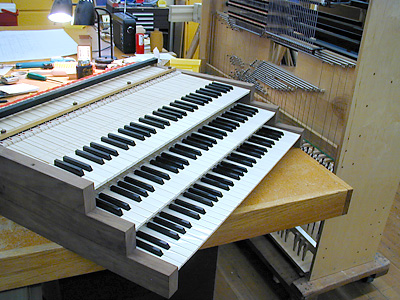
The keyboards have naturals covered with CITES legal elephant ivory.

Randy making swell shade frames.
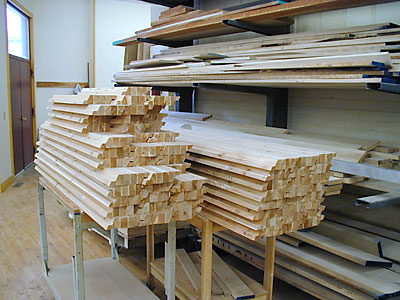
Stacks of swell shades waiting to be cut to exact length.

The completed Choir windchest sits (upside down) in front of the Choir swell shutter frame.
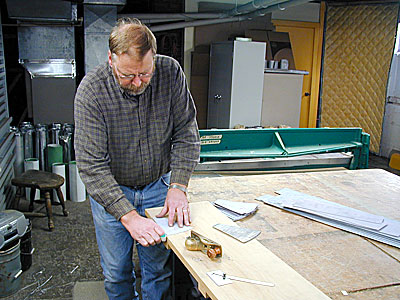
John prepares the feet of the metal trebles of the Pedal Violone 16'.

Violone languids being soldered to the feet.

Bill cones the feet of the Swell Celeste 8'.
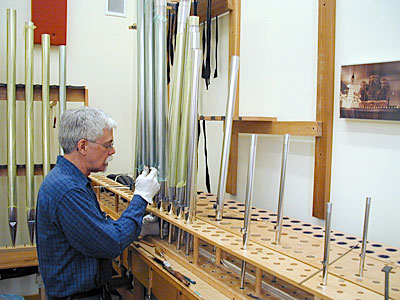
Bill voicing the Swell Celeste 8'.

Adjusting a lid while voicing the Swell Oboe.
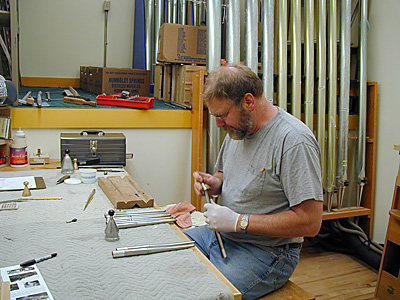
John voices the metal trebles of the Swell Bourdon 8'; the majority of pipes in this stop are made of wood.

Lynn Dobson makes drawings of the pipeshades.
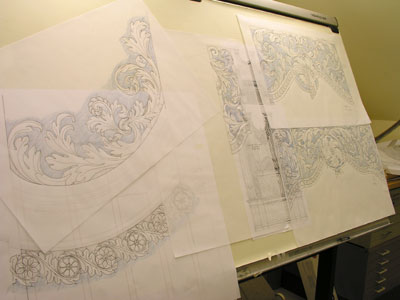

Bob making up cables that connect the slider solenoids to the combination action equipment...
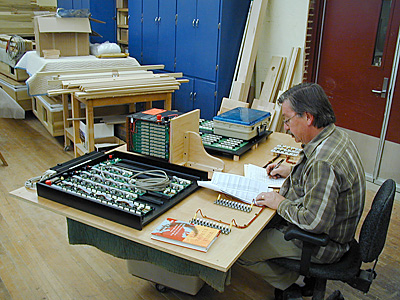
...and configuring the electronic equipment for the combination action and the electric key action for the offset chests for the Pedal basses.
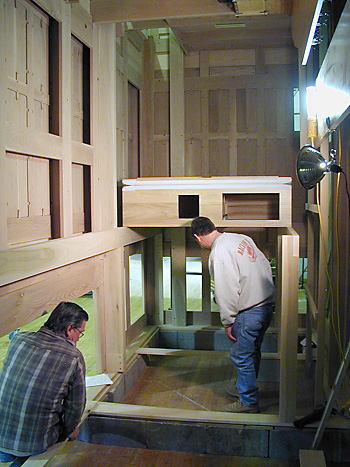
The Choir reservoir is installed.
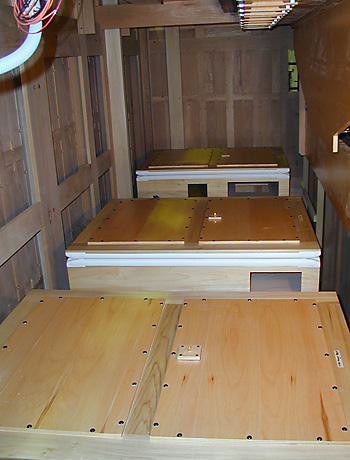
Great reservoir in foreground, then Swell, then Choir.

Donny works on pieces of the “tracker run,” the framework that will support the horizontal trackers as they run from the detached console under the floor and into the organ. The horizontal trackers are about 14' long.

Wooden ducts or “wind trunks” being glued.
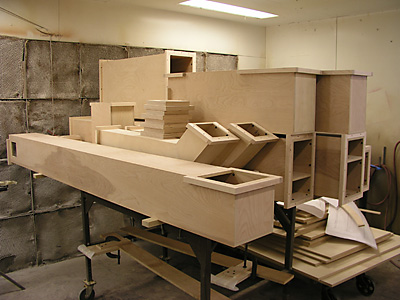
Wind trunks...
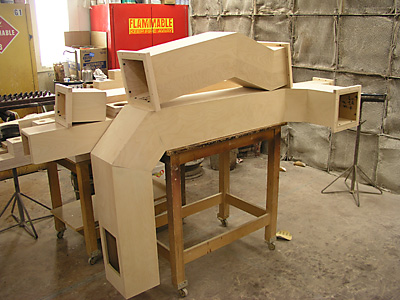
...and more wind trunks.

Windchest rackboards laid out in the spray booth for lacquering.

Pulldown wires being installed. This is the Great/Pedal C# windchest.
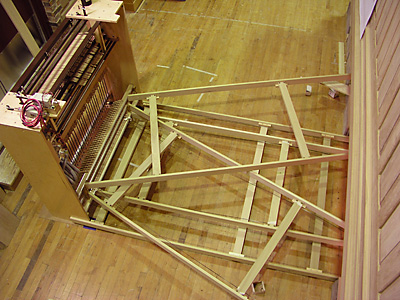
The frames that guide the horizontal trackers as they run under the floor. The console chassis is on the left, sans case.
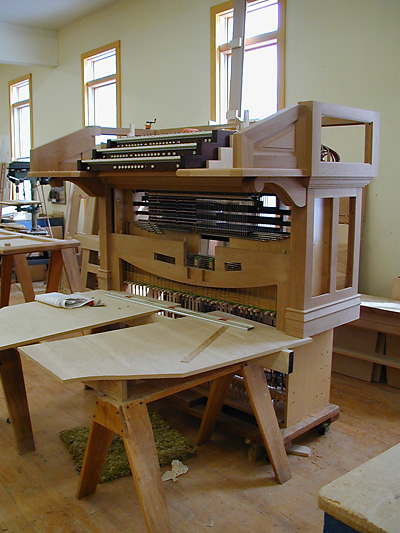
The console chassis is united with its case.

The organ was packed in two semi trailers, the second of which was loaded during a blizzard on 1 March. Dean Heim, shown here on the trailer roof outside our loading dock, had to shovel more than 3' of snow that had accumulated, as the weight of the snow was causing the trailer roof to cave in.















































